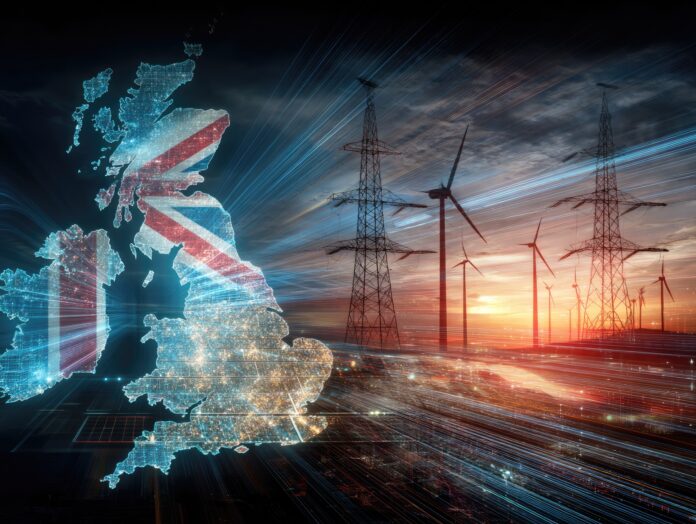Artificial intelligence is no longer a futuristic fantasy—it’s the engine powering the UK’s digital economy. From predictive healthcare and autonomous transport to financial modelling and language translation, AI is revolutionizing every sector. Yet, while the benefits of AI are vast, its computational hunger poses a mounting sustainability challenge. As Britain seeks global leadership in AI, it must also ask a critical question: How will the UK sustainably power its digital future?
The Growing Energy Appetite of AI
Modern AI systems—such as OpenAI’s GPT-4, Google’s PaLM, and DeepMind’s AlphaFold—demand supercomputing power previously reserved for national laboratories. Training these models can require weeks of uninterrupted GPU operation, with energy demands comparable to that of small towns. Research suggests that training a single large AI model can consume the same electricity as over 100 UK households in a year.
But energy consumption doesn’t end after training. Inference—the process by which AI delivers answers, insights, or decisions—adds a constant load across mobile, cloud, and edge environments. This “always-on” model contributes to growing energy pressure, especially as AI becomes integrated into everything from smart traffic systems to real-time supply chain analytics.
Currently, UK data centres consume nearly 3% of the nation’s electricity. This figure is projected to double by 2030 without strategic changes. Public service applications—such as AI-driven NHS diagnostics and climate modelling—are expanding this digital energy demand at a rapid pace.
Britain’s Grid Under Pressure
The UK’s electrical grid faces a dual challenge: decarbonising its energy sources while meeting the electricity needs of a digital-first society. This tension is exacerbated by an ageing grid, intermittent renewable sources, and increasing international energy market volatility.
Although wind and solar are growing parts of the UK’s energy portfolio, they present stability issues. AI workloads require consistent and predictable power that variable renewables often can’t deliver without backup storage. Consequently, grid planners are under pressure to upgrade both capacity and reliability.
To address this, the UK is investing in:
- Small Modular Reactors (SMRs) for nuclear baseload power
- Battery and hydrogen storage technologies to smooth out supply
- Smart grid systems that use AI to balance real-time demand
- Geographically strategic data centres near renewable sources and natural cooling resources
Toward Greener AI
The private sector is also playing a pivotal role in shaping a low-carbon AI ecosystem. UK-based Graphcore is developing efficient chips that perform complex computations with less power. DeepMind has applied AI to data centre cooling systems, cutting energy use by up to 40%.

Sustainable data centre operators like Verne Global and Kao Data are adopting geothermal and hydroelectric power, designing facilities with closed-loop cooling systems and on-site renewable generation. Meanwhile, modular data centre designs allow for better energy use scalability.
At the policy level, the UK’s forthcoming AI Code of Practice will mandate environmental reporting standards. This is expected to include energy transparency benchmarks for AI model training, aligning digital innovation with broader environmental, social, and governance (ESG) targets.
Universities such as Cambridge and the Alan Turing Institute are launching interdisciplinary research on energy-aware AI—from efficient model architectures to carbon-sensitive workload scheduling.
Balancing Innovation and Responsibility
The UK stands to gain significantly from AI. A 2023 PwC report estimates that AI could add £230 billion to the national economy by 2030. However, this growth must align with climate goals.
Achieving this balance requires a shift in development culture. Key strategies include:
- Offering green R&D incentives to AI firms
- Creating transparent benchmarks for compute efficiency
- Integrating sustainability into computer science and engineering education
- Encouraging energy-data partnerships between AI providers and utilities
Furthermore, AI can become part of the solution. Smart grids powered by AI can better predict demand spikes. AI simulations can help policymakers assess the impact of different energy strategies. In this way, the very technology contributing to the problem could help solve it.
Regional Hubs and Global Collaboration
UK cities are emerging as innovation clusters. Manchester is integrating AI into local energy platforms. Edinburgh’s fintech sector is exploring low-power blockchain networks. London’s business districts are investing in AI-enhanced smart buildings that optimise heating, cooling, and lighting based on real-time use.
On the global stage, the UK collaborates through initiatives like the Global Partnership on AI (GPAI), ensuring best practices in sustainable AI development are shared across borders. National funding agencies such as Innovate UK and UKRI are also backing early-stage research on carbon-aware hardware, green silicon manufacturing, and scalable liquid cooling systems.
Conclusion: Building a Sustainable AI Future
The UK AI Energy Challenge is a defining issue for the digital era. As AI becomes an essential layer of national infrastructure, the need to decouple innovation from carbon becomes urgent.
With coordinated action across government, industry, and academia, the UK can lead the world in responsible AI development. By embedding sustainability into every stage of the AI lifecycle—from chip to code to cloud—the nation can ensure its digital leadership is both economically strong and environmentally sound.
The future is being coded today. And it must be powered wisely.



